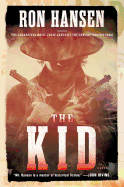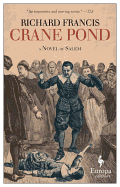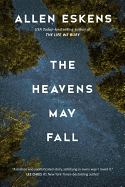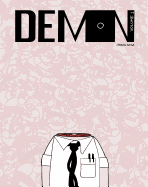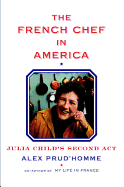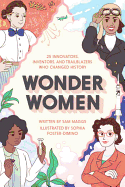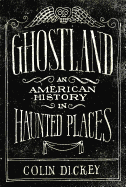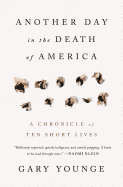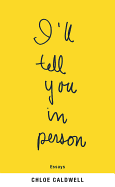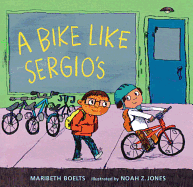It's No Trick... Halloween Treats
Shelf Awareness sorted through piles of 2016 children's books to find these delicious Halloween-time offerings (see more here).
 Little Blue Truck's Halloween (Houghton Mifflin Harcourt), by Alice Schertle and illustrated by Jill McElmurry, is a sturdy lift-the-flap board book that introduces the idea of Halloween costumes to the very youngest readers. Toad is driving Little Blue Truck to a Halloween party when they see a duck disguised as a ballerina: "Who's that in a tutu/ striking a pose/ up on the tiniest/ tips of her toes?" Lift the flap and the disguise is revealed: " 'Quack!' says the duck. 'It's me! It's me!' " All the costumed animals they encounter hop aboard the truck until everyone's at the party... except... where did Little Blue go? "Beep! Beep! Boo!"
Little Blue Truck's Halloween (Houghton Mifflin Harcourt), by Alice Schertle and illustrated by Jill McElmurry, is a sturdy lift-the-flap board book that introduces the idea of Halloween costumes to the very youngest readers. Toad is driving Little Blue Truck to a Halloween party when they see a duck disguised as a ballerina: "Who's that in a tutu/ striking a pose/ up on the tiniest/ tips of her toes?" Lift the flap and the disguise is revealed: " 'Quack!' says the duck. 'It's me! It's me!' " All the costumed animals they encounter hop aboard the truck until everyone's at the party... except... where did Little Blue go? "Beep! Beep! Boo!"
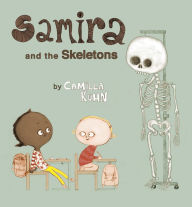 It's always fun to remind people that we all have skeletons inside us. But in Camilla Kuhn's Samira and the Skeletons (Eerdmans), Samira isn't handling the teacher's news well: " 'No way!' Samira shouts. 'I do NOT!' " Kuhn cleverly shows how Samira now perceives her classmates: creepy little skeletons in T-shirts. The real punchline comes when the teacher's lesson plan turns to muscles: "Exactly like a steak." This charmingly illustrated Norwegian import offers a quirky, comical perspective on basic anatomy.
It's always fun to remind people that we all have skeletons inside us. But in Camilla Kuhn's Samira and the Skeletons (Eerdmans), Samira isn't handling the teacher's news well: " 'No way!' Samira shouts. 'I do NOT!' " Kuhn cleverly shows how Samira now perceives her classmates: creepy little skeletons in T-shirts. The real punchline comes when the teacher's lesson plan turns to muscles: "Exactly like a steak." This charmingly illustrated Norwegian import offers a quirky, comical perspective on basic anatomy.
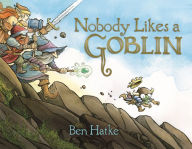 In Ben Hatke's Nobody Likes a Goblin (First Second/Roaring Brook/Macmillan), Goblin visits his best friend Skeleton in the dungeon's treasure room. Just as he's trying on a golden crown, some adventurers rush in and steal everything, including Skeleton. As tiny crowned Goblin walks out into "the wide world" to rescue his friend, a troll warns him to be careful because "Nobody likes a goblin." In this wonderfully illustrated fairy tale, Goblin traverses the countryside undeterred by hostile sorts until he bravely saves his best friend and makes some new ones while he's at it. --Karin Snelson, children's & YA editor, Shelf Awareness
In Ben Hatke's Nobody Likes a Goblin (First Second/Roaring Brook/Macmillan), Goblin visits his best friend Skeleton in the dungeon's treasure room. Just as he's trying on a golden crown, some adventurers rush in and steal everything, including Skeleton. As tiny crowned Goblin walks out into "the wide world" to rescue his friend, a troll warns him to be careful because "Nobody likes a goblin." In this wonderfully illustrated fairy tale, Goblin traverses the countryside undeterred by hostile sorts until he bravely saves his best friend and makes some new ones while he's at it. --Karin Snelson, children's & YA editor, Shelf Awareness
It's No Trick... Halloween Treats
Reading with... Elsa Hart
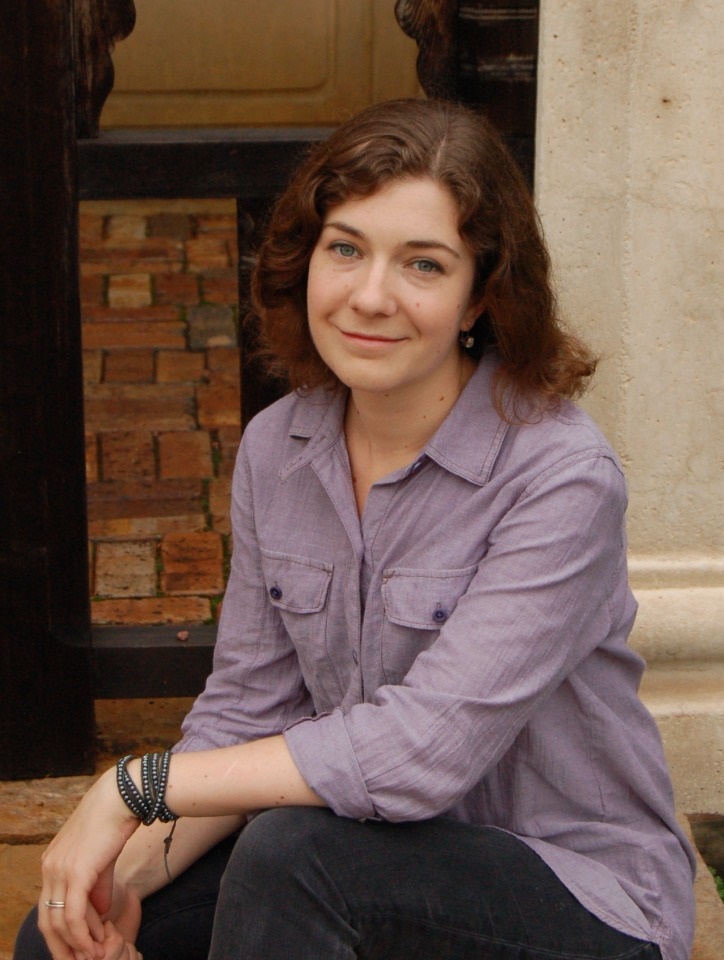 |
| photo: Robbie Hart |
Elsa Hart wrote her first novel, Jade Dragon Mountain (Minotaur), while studying alpine plants in southwest China with her husband, a botanist. Before that, she graduated from Swarthmore College and Washington University in St. Louis School of Law. Set in the 18th century, The White Mirror (Minotaur, September 6, 2016), the sequel to Jade Dragon Mountain, follows former librarian Li Du into the snowy borderlands between China and Tibet.
On your nightstand now:
The Last Bookaneer by Matthew Pearl.
Favorite book when you were a child:
My Father's Dragon by Ruth Stiles Gannett. Not only is it a captivating tale of a boy who sets out, on the recommendation of an alley cat, to rescue a baby dragon from enslavement, but there was nothing more satisfying to my organized, controlling little child mind than Elmer Elevator's perfectly packed knapsack.
Your top five authors:
Agatha Christie's incisive character sketches and uncluttered plots are, for me, a perpetual source of pleasure. Terry Pratchett's novels illuminate history's most disappointing patterns without succumbing to despair. Louise Erdrich arranges words into currents that dislodge my footing and pull me under. George Eliot's characters change with every reading; I will always return to learn more about them and about myself. William Shakespeare reminds me of the potential of human thought.
Book you've faked reading:
The prospect of being caught faking it induces more anxiety than the prospect of admitting that I haven't read the book. But I tend not to volunteer the dearth of Charles Dickens in my readerly background.
Book you're an evangelist for:
The Raw Shark Texts by Steven Hall, in which there is a predator whose hunting ground is text. Danger lurks, quite literally, within the pages. It's a frightening story that revels in tropes, and never employs them thoughtlessly.
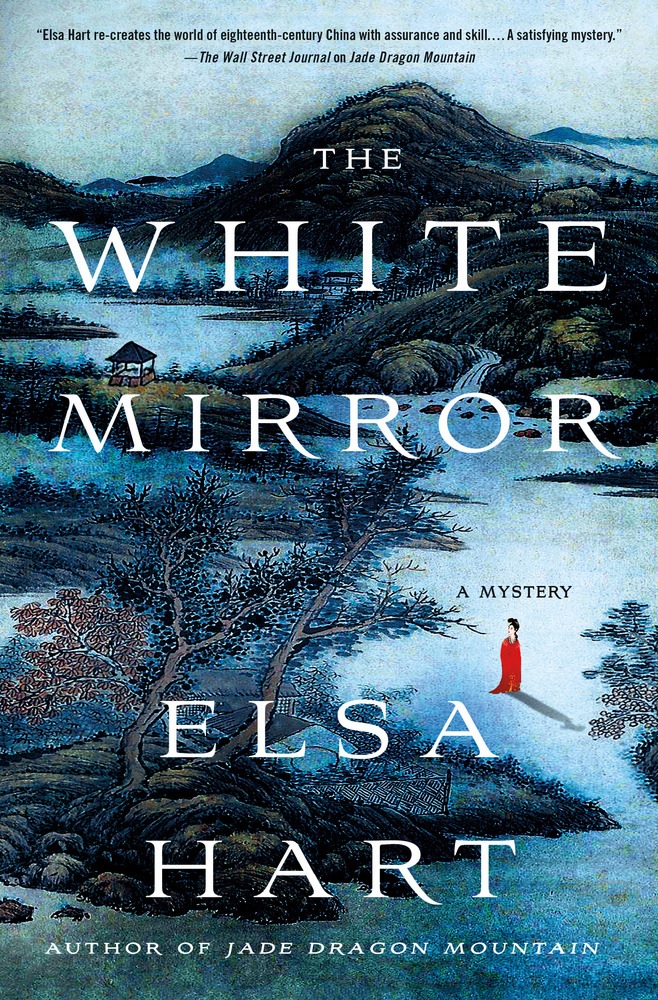 Book you've bought for the cover:
Book you've bought for the cover:
The Yiddish Policemen's Union by Michael Chabon. Inside, the unusual amalgam of culture, history and genre suggested by the cover expands into an alternate reality made stranger by the elements of it that are familiar.
Book you hid from your parents:
Romance novels borrowed from the library at my grandmother's retirement community swimming pool. I remember the smell of chlorine and yellowing paperback pages. Relentless by Patricia Potter was a revelation.
Book that changed your life:
Ivanhoe by Sir Walter Scott. I read it during the summer after fourth grade. I was surrounded by summer things--ice cream trucks, sprinklers, tetherball, sunblock, dinnertime--and I'd look up at twilight and realize that I'd been somewhere else. I'd been in a forest in the 12th century with a band of outlaws, and I'd gone there all by myself. That book made me a reader.
Favorite line from a book:
"The seller of lightning rods arrived just ahead of the storm." It is from Chapter 1 of Ray Bradbury's Something Wicked This Way Comes. I recommend reading this book in October once the leaves have started to fall and the wind carries just a little bit of malevolence under the sweet candy and apple cider.
Five books you'll never part with:
I move often, and my bookshelf does shift and change. But when I look at it right now and ask myself which volumes would remain if I had to part with all but five, I'd keep my Complete Works of William Shakespeare, Gardner's Art Through the Ages, the Robert Fagles translation of The Odyssey, The Lord of the Rings by J.R.R. Tolkien and Jane Eyre by Charlotte Brontë.
Book you most want to read again for the first time:
There are many books I am glad I am not reading for the first time, books that I worry I would dismiss without the openness of childhood. And there are books I'm glad I read as early as possible so that I can reread them at different stages in my life. But to answer the question--it must be Murder on the Orient Express by Agatha Christie.
Reading with... Elsa Hart
Mapping the Nobel Prize; Halloween Costumes
To celebrate yesterday's announcement that Bob Dylan is a Nobel Laureate, My Poetic Side created a "World Map of Nobel Prize in Literature."
---
Picked out your Halloween costume yet? Bustle suggested "7 Halloween costume ideas based on your favorite '90s books"; Reading Group Choices offered "a few costume ideas from our groups' favorite books that'll make you and your group look both spooky and smart this year"; and Brightly modeled "19 book-inspired Halloween costumes for kids and parents."
---
"From Machiavelli to Karen Joy Fowler," author Frans de Waal tracked the "top 10 books about intelligent animals" for the Guardian.
---
Infographic of the Day: Books on the Wall featured "50 states of literature: book recommendations for every state."
---
"Our perfect marriage: literary spouses," as introduced by Quirk Books.
---
Headline of the day: "U.S. and Cuban Officials Collaborate to Preserve Hemingway Memorabilia."
Mapping the Nobel Prize; Halloween Costumes
Rediscover: Bob Dylan
 The Swedish Academy gave a surprise prize to Bob Dylan yesterday morning by awarding him the Nobel Prize in Literature. The folk legend's literary lyrics were recognized "for having created new poetic expressions within the great American song tradition." Sara Danius, permanent secretary of the Swedish Academy, called Dylan a "great poet in the English speaking tradition," saying his album Blonde on Blonde (1966) was "an extraordinary example of his brilliant way of rhyming and putting together refrains, and his pictorial thinking."
The Swedish Academy gave a surprise prize to Bob Dylan yesterday morning by awarding him the Nobel Prize in Literature. The folk legend's literary lyrics were recognized "for having created new poetic expressions within the great American song tradition." Sara Danius, permanent secretary of the Swedish Academy, called Dylan a "great poet in the English speaking tradition," saying his album Blonde on Blonde (1966) was "an extraordinary example of his brilliant way of rhyming and putting together refrains, and his pictorial thinking."
Though Dylan is first and foremost a musician, he has dabbled in other forms of expression. Tarantula (1971) is a combination of stream-of-consciousness prose, lyrics and poetry written in 1966, during a crucial period in Dylan's creative evolution. Writings and Drawings (1973), currently out of print, collects Dylan's song lyrics and sketches. Chronicles: Volume 1 (Simon & Schuster, 2004) is Dylan's first memoir, recounting his early New York years and his experience being in the eye of a pop culture storm. On November 1, Simon & Schuster will release an annotated and updated edition of The Lyrics: 1961-2012 ($60, 9781451648768).
Homer and Sappho "wrote poetic texts that were meant to be listened to," said Danius. "They were meant to be performed, often together with instruments.... We still read Homer and Sappho, and we enjoy it. Same with Bob Dylan. He can be read and should be read." --Tobias Mutter
Book Review
Fiction
The Kid
by Ron Hansen
Few legends of the American Old West are as enduring and elusive as that of William H. Bonney, better known as Billy the Kid. Ron Hansen, who started his career writing literary westerns (Desperadoes), has returned to his roots with a meticulously researched novel that digs into Bonney's life. While Hansen does not answer every question about the Kid's short and violent trajectory, he does reframe Bonney's exploits in an effective and haunting way, providing fresh insight about the man and myth.
The Kid begins with Bonney's birth as Henry McCarty in New York and his family's relocation to New Mexico following his father's death. His mother died when he was 14, and the orphaned boy fell in with the wrong crowd and landed in jail. McCarty escaped to Arizona, worked as a rancher and shot a man before fleeing back to New Mexico, where he changed his name to Bonney. He was a fast-shooting and graceful bantamweight man who charmed women and attracted loyalty from friends, despite a hair-trigger temper and a hair-trigger hand. While many of the Kid's initial crimes involved theft, it was the murder of a mentor during the Lincoln County Wars that pushed Bonney to embrace violence and his life as an outlaw.
Early on, one character asks Billy what he wants from this life; he responds, "To belong. To be liked. To be famous. To be feared." These are haunting words played out over the course of the Kid's violent life and impressive literary afterlife in Hansen's entertaining adventure. --Nancy Powell, freelance writer and technical consultant
Discover: Ron Hansen has written a haunting biographical novel about Billy the Kid and the people responsible for creating the myth.
Scribner,
$26,
hardcover, 320p., 9781501129759
Crane Pond: A Novel of Salem
by Richard Francis
Richard Francis (Judge Sewall's Apology) turns to historical fiction to tell the story of a Salem witch trials judge from a personal perspective. Crane Pond is an intimate look at this 17th-century American colonist, who married the first black couple in Boston, was a devoted brother, husband and father, and always strove to do what was right. Told in Samuel Sewall's voice, the novel delves into the mind and emotions of the only judge to publicly ask forgiveness for his role in the tragedy that resulted in 20 innocent women being hung.
Sewall is a simple character in a complex situation. He has strong faith, but this faith brings contradictions that leave him praying for guidance and strength, seeing signs in nature's unpredictability and following the demands of leaders whose idealism blind them to the evil they evoke in their followers. Crane Pond offers a compassionate view of this mortal in his struggles to do what is best, despite his ultimate failure. Readers may find the struggle between religion and politics familiar.
Richard Francis's in-depth knowledge of his character and the era makes Crane Pond eerily authentic, while his empathy for Sewall provides a rare perspective of an event that has long captivated readers. Francis also guides his audience into the period with convincing language that captures the atmosphere but doesn't require translation. Crane Pond is fascinatingly engaging and thought provoking, the best kind of storytelling. --Jen Forbus, freelancer
Discover: An empathetic, fictional account of the only judge to ask forgiveness for his role in the Salem witch trials.
Europa Editions,
$18,
paperback, 326p., 9781609453510
Mystery & Thriller
The Heavens May Fall
by Allen Eskens
Allen Eskens is dastardly. In The Heavens May Fall, he gives us two root-for-'til-the-end best friends--law professor Boady Sanden and Detective Max Rupert--and puts them at odds. Boady and Max have appeared in Eskens's other novels (The Life We Bury), but they take center stage in this duel over the murder of a wealthy foundation director, each bringing personal demons to the legal battle that threatens to end their relationship.
Ben Pruitt, the victim's husband, is Boady's former law partner. Boady agrees to represent Ben despite having retired from practice following a devastating loss. Max and Ben also have a history, but it's far from warm and fuzzy. Boady is certain his friend is innocent; Max is burning to prove Ben's alibi is not as airtight as it seems. Though he's zeroed in on Ben as the killer, Max may be falling victim to tunnel vision and the emotions raised by the anniversary of his wife's death.
Two heroes working at cross-purposes on a high-profile case ingeniously ratchets the tension over where the chips will fall. One of these good men is wrong. The story is told from competing perspectives, with Boady and Max each working steadfastly toward what he believes is justice. Eskens keeps the pace brisk, the plotting tight. His criminal law acumen is evident in compelling courtroom scenes. The short chapters in this thrilling mystery will have readers just-one-more-ing well past bedtime. --Lauren O'Brien of Malcolm Avenue Review
Discover: A lawyer and his detective best friend risk their friendship when each is convinced he's on the right side of justice for a murdered woman.
Seventh Street Books,
$15.95,
paperback, 270p., 9781633882058
Science Fiction & Fantasy
The Rift Uprising
by Amy S. Foster
Seventeen-year-old Ryn Whittaker is a Citadel, a soldier with specially enhanced physical abilities, whose primary purpose is to guard the Rift, a portal where creatures from one of the numerous other Earths in the multiverse appear on a frequent basis. She hides her true identity from the few non-Citadel friends that she has and from her family, who think she attends school instead of protecting the planet from invaders. When Ezra, a young man from a different Earth, rifts through the glowing green portal, Ryn becomes attracted to him despite a condition called Blood Lust, which turns any romantic notion in a Citadel into a desire to kill. Ezra, an MIT student, begins to question the new world he has arrived in, and it prompts Ryn to wonder who in fact she is--and why she continues to follow orders obediently.
The Rift Uprising by Amy S. Foster is a fast-paced and intriguing first book in a trilogy that blends quantum physics and modern cultural references with teenage angst and romance. She encourages readers to consider the psychological, cultural and racial implications of a world that is inhabited by people who, for their own personal gain, are bent on manipulating children, forcing them to become something they are not. She also delves into the multiple layers of what it means to be an immigrant--from a different version of Earth--and an American, and how society and those in the higher echelons of power dictate conformity to the detriment of the innocent. --Lee E. Cart, freelance writer and book reviewer
Discover: When a stranger from another Earth appears and begins asking questions, more doorways are opened than the portal he traveled through.
Harper Voyager,
$21.99,
hardcover, 400p., 9780062443120
Graphic Books
Demon, Volume 1
by Jason Shiga
Demon first appeared as a serial on Jason Shiga's website, ShigaBooks, nearly two years ago. Shiga revived Jimmy Yee, the trademark hero of his previous comics, (Meanwhile, Bookhunter, Fleep and Empire State), and used mystery and puzzles as part of the narrative, but with a body-snatching twist. No matter how many times Jimmy tries, he cannot die in a story where Groundhog Day meets Inception.
Demon opens with Jimmy writing a letter. The next panels show him at various stages of thought, until the very last panel on the page, with his feet dangling above the note; the scene fades to black. Jimmy wakes up in bed to realize his suicide attempt failed, although 20 minutes have elapsed. Jimmy slits his wrists, shoots himself and dives headfirst into the path of an oncoming truck, to no avail. His last suicide attempt puts him in the hospital, where he remembers the car accident that claimed the lives of his wife and daughter. Depressed and sad, he robs a bank and kills the teller before landing in his present circumstances. The action that ensues is even more twisted, surreal and shocking than might be anticipated. Shiga's artistic minimalism plays well in setting the pace. Early panels echo the time loop that Jimmy seems to relive after each suicide attempt, and the details added to later panels emphasize the progressive desperation and distress that haunts him after each failure.
While Meanwhile was experimental and Empire State was nostalgic, Demon is a stunning amalgamation of Shiga's previous books and the formal debut of what should become an intellectually stimulating cult classic. --Nancy Powell, freelance writer and technical consultant
Discover: Jason Shiga's follow-up to Meanwhile is a twisted supernatural story that features antihero Jimmy Yee in a fast-forward time loop.
First Second,
$19.99,
paperback, 176p., 9781626724525
Food & Wine
The French Chef in America: Julia Child's Second Act
by Alex Prud'homme
Many of the writings about celebrity chef Julia Child's life have focused on her years abroad, her earliest cookbooks and her first television program, The French Chef. Alex Prud'homme, Child's nephew and coauthor of her memoir My Life in France, fills in the story of her "second act" with this look at her life after that first program.
Her iconic status encourages a false perception that Child rocketed to stardom following the publication of Mastering the Art of French Cooking and remained there, but in fact, she faced the same pressure as any other celebrity to reinvent herself to match changing public interest. Blessed with a boundless work ethic and an indomitable spirit, she rose above creative differences, fickle audiences and shifts in culinary zeitgeist, from a taste for the rich and exotic to a demand for healthier, lighter fare. She mentored and collaborated with other celeb chefs, gave viewers a behind-the-scenes look at a White House dinner, and eschewed paid endorsements on her way to becoming a pioneer in culinary entertainment.
Thanks to extensive use of personal letters and papers, the narrative includes Child's voice, and Prud'homme skillfully evokes his aunt by focusing on her most human moments. His in-depth exploration of her relationship with nouvelle cuisine, the forerunner of today's local and sustainable food movements, shows how complex but flexible her philosophies could be. This candid but loving look at one of food entertainment's biggest personalities will satisfy fans. --Jaclyn Fulwood, blogger at Infinite Reads
Discover: Julia Child's nephew and former coauthor, Alex Prud'homme, brings to life the "second act" in the chef's venerable career.
Knopf,
$27.95,
hardcover, 336p., 9780385351751
Biography & Memoir
Wonder Women: 25 Inventors, Innovators, and Trailblazers Who Changed History
by Sam Maggs
"Representation is important," Sam Maggs writes in her introduction to Wonder Women. "Media critics use this phrase all the time.... But something we often forget is that representation matters everywhere, not just in fiction but also in our everyday IRL lives." In the warm, colloquial style that characterized her first book, The Fangirl's Guide to the Galaxy, Maggs presents bite-size biographies of 25 "brilliant, patriarchy-smashing, butt-kicking" women who have made important discoveries in traditionally male-dominated fields.
Starting with STEM fields (science, technology, engineering and math), Maggs highlights a few women whose stories may be familiar to readers (computer programmer Ada Lovelace; pioneering doctor Elizabeth Blackwell) along with many more obscure figures (Austrian physicist Lise Meitner; Indian doctor Anandibai Joshi). She moves on to "Women of Espionage," then the broader categories of "innovation" and "adventure," which include female painters, inventors, rocket scientists, aviators and more. Maggs rounds off each section by interviewing a professional woman in the relevant field, asking about their career paths and soliciting advice for young women who want to follow in their footsteps. Maggs's message--delivered in a snappy, girl-power tone--and her subjects--any one of whom could star in a book of her own--are timely and compelling.
For girls in search of whip-smart female role models or adults of any gender who have heard one too many stories about white men, Wonder Women is a smart, witty celebration of its subjects. --Katie Noah Gibson, blogger at Cakes, Tea and Dreams
Discover: Sam Maggs highlights 25 whip-smart, brave women and the pioneering contributions they made in traditionally male-dominated fields.
Quirk Books,
$16.99,
hardcover, 240p., 9781594749254
History
Ghostland: An American History in Haunted Places
by Colin Dickey
Whether told around a campfire or as cautionary tales, ghost stories persist in American discourse despite a lack of conclusive evidence for the hauntings in question. In Ghostland: An American History in Haunted Places, Colin Dickey (Cranioklepty; Afterlives of the Saints) travels the country to investigate possessed locales and gain insight into their spooky legends. But rather than assembling a mere compendium of the nation's scariest anecdotes of the supernatural, he takes a savvy turn into the sordid annals of American history and discovers truths far more unsettling than phantoms in the night.
Salem, Mass., thrives on tourism dedicated to its infamous 17th-century witch trials, a legacy Nathaniel Hawthorne borrowed for his novel The House of the Seven Gables. While religious scapegoating makes for tragic history, and magical curses make for great fiction, Dickey analyzes how property disputes contributed to many of the accused being sent to the gallows. He considers the squalor and abuse rampant in an Ohio asylum that allowed one patient to disappear into an abandoned wing during the winter and die of exposure--leaving a stain, "a ghostly outline in chalky white," likely the result of her body fat decomposing.
Touring the Winchester Mystery House in San Jose, Calif., and the uncanny everything in New Orleans, La., Dickey artfully demystifies overgrown frights, revealing the injustices and atrocities that gave birth to them. While truth may be stranger than fiction, Ghostland's greatest chills come from traversing the eerie landscape in between. --Dave Wheeler, associate editor, Shelf Awareness
Discover: Colin Dickey explores notoriously haunted locales to reveal an American history fraught with injustice and betrayal.
Viking,
$27,
hardcover, 336p., 9781101980194
Social Science
Another Day in the Death of America: A Chronicle of Ten Short Lives
by Gary Younge
Born in Great Britain to Barbadian parents, Guardian journalist Gary Younge (The Speech: The Story Behind Dr. Martin Luther King Jr.'s Dream) lived in the United States for more than a decade (2003-2015) and became a parent during that time. His struggle to understand the nation's gun culture intensified as he also discovered the increased likelihood of gun violence affecting black children like his own. Another Day in the Death of America is a result of his interest in the disturbingly neglected fact that seven children, on average, die each day in the U.S. because of gun violence.
Younge researches the gun deaths of children that he is able to identify--10 total--during the arbitrarily chosen 24 hours from 3:57 a.m. on November 23, 2013, to 3:30 a.m. on November 24, 2013. Through public documents, news reports and interviews with friends and family members, he tells the stories of these victims, aged nine to 19, who perished without national attention.
The gripping power of Another Day in the Death of America radiates from Younge's compassion and thoroughness. The book is steeped in relevant statistics and background, but never loses sight of the human element. In fact, Younge pointedly emphasizes the need to cease viewing some victims as "angels" and others as deserving of their fate. While his role as a father enhances his empathy, his outsider status enables him to look at the role of guns without the unusual biases some Americans have. Heartbreaking, compelling and inspiring, this is a strong voice for the victims of many devastatingly silent, daily tragedies. --Jen Forbus, freelancer
Discover: A British journalist and father tells the stories of the children who died as a result of gun violence in a single day in the United States.
Nation Books,
$25.99,
hardcover, 304p., 9781568589756
Essays & Criticism
I'll Tell You in Person: Essays
by Chloe Caldwell
In the opening pages of I'll Tell You in Person, Chloe Caldwell (Legs Get Led Astray) reflects on the first personal essay she read: "Mono No Aware" by Miki Howard. Dissecting Howard's work, Caldwell asks, "But how did she do that? Take something from her life and craft it into this moving piece of art that resonated with me even though it had nothing to do with me?"
The pieces in I'll Tell You in Person attempt to answer that question, as Caldwell's personal experience centers on universal themes of friendship, love and self-discovery. This is more successful in some essays than others (though these successes and failures may be more a reflection of the reader than the writer). In "Hungry Ghost," Caldwell explores the lengths to which we will go to impress others. "Sisterless" tries to give shape to a relationship that moves beyond friendship and into some nameless place. Female friendship surfaces again and again, both as the central theme of particular essays (as in "Maggie and Me: A Love Story," the story of a friendship found and lost) and as a secondary theme in stories of coming out and hooking up and hitchhiking and job hunting and quitting and searching.
Caldwell doesn't always paint herself in a particularly favorable light: she is selfish, dangerous, boisterous, disastrous and at times heartless. This may turn off some readers, but those willing to sit with the discomfort of Caldwell's experiences, for better or worse, may feel "a touch of participation mystique while reading about [these] sometimes poor decisions." --Kerry McHugh, blogger at Entomology of a Bookworm
Discover: Caldwell's essays about not-always-wonderful experiences speak to universal themes of love, friendship and self-discovery.
Coffee House Press,
$16.95,
paperback, 208p., 9781566894531
Children's & Young Adult
A Bike Like Sergio's
by Maribeth Boelts, illus. by Noah Z. Jones
Sergio has a bike. So do all the other kids. Ruben wants one, too.
Just as Ruben is in line at Sonny's Grocery thinking about money, and how "wishes won't make money appear," money appears. A dollar bill falls out of a blue-coated lady's purse. Sergio doesn't run after her, he pockets it, and it's not until he gets home that he realizes, hands shaking, that it's not a one-dollar bill, it's a hundred-dollar bill, enough for "a bike like Sergio's." The money, now safely in his backpack, is all Ruben can think about, but how would he explain a new bike to his parents? His anxiety escalates when he empties his backpack after school, and the bill is gone. Desperately retracing his steps through the rainy city streets, he realizes "Leaves and money look the same. Rain and tears feel the same." To his great relief, Ruben finds the money in a different backpack pocket and thinks, "I am rich again," but when he later spots the blue-coated lady at Sonny's Grocery, "like a hot blast, I remember how it was for me when that money that was hers--then mine--was gone." This time Ruben does run after her, and when he returns her money, "Her face changes from surprised... to joyful... to soft."
Maribeth Boelts's A Bike Like Sergio's honestly, lyrically captures the heat, sweat and rollercoaster nature of a child's ethical dilemma. Noah Z. Jones's watercolor, pen and ink artwork has a free and sketchy style, expressive and thoroughly charming. A true stand-out from the author-illustrator team behind Those Shoes. --Karin Snelson, children's & YA editor, Shelf Awareness
Discover: In this appealing, emotionally resonant picture book, a boy who desperately wants a bicycle finds some money a woman has dropped and has to decide whether to keep it or give it back.
Candlewick,
$15.99,
hardcover, 40p., ages 4-9, 9780763666491
Rani Patel in Full Effect
by Sonia Patel
Sixteen-year-old Rani Patel is always the odd one out: she's the only Gujarati Indian girl on the tiny Hawaiian island of Moloka'i, where she moved when she was 12, and the only girl she knows who writes rap. After her abusive father leaves Rani and her mother alone to run the family general store and café, hip-hop is her only solace. When her alter ego, MC Sutra, is invited to audition for an underground hip-hop crew, Rani finally has something to look forward to--especially when another MC, Mark, shows interest in more than her rhymes. But Mark is older, with struggles of his own. When they become involved, memories of her father's abuse overwhelm her, causing an emotional upheaval that even Rani doesn't understand. Rani's "hard work at staying sober from Mark-the-love-drug" will be familiar to older teens.
Readers will find a kindred spirit in Rani through Sonia Patel's skillful crafting of her internal battle. Patel doesn't turn away from the difficult issues Rani is facing, especially the "emotional turmoil" that results from incest. Throughout Rani Patel in Full Effect, Patel--a child and adolescent psychiatrist--is respectful of what abused teens survive without sugarcoating. Teens recovering from sexual trauma will be inspired by a heroine who gathers her inner strength despite setbacks; others will gain insight into how trauma makes people act unexpectedly. And all readers will appreciate the authentic detail and development of Rani's Gujarati-Hawaiian-hip-hop world of 1991. Rani's deeply felt but uneven rhymes, combined with the book's effortless inclusion of Gujarati and Hawaiian pidgin, create a distinct adolescent voice. --Stephanie Anderson, assistant director for public services, Darien Library (Conn.)
Discover: In this potent YA novel, Gujarati Indian Rani Patel is a traumatized teenaged rapper who lives on a tiny Hawaiian island and finds solace in her art and voice.
Cinco Puntos Press,
$11.95,
paperback, 224p., ages 14-up, 9781941026502
 Little Blue Truck's Halloween (Houghton Mifflin Harcourt), by Alice Schertle and illustrated by Jill McElmurry, is a sturdy lift-the-flap board book that introduces the idea of Halloween costumes to the very youngest readers. Toad is driving Little Blue Truck to a Halloween party when they see a duck disguised as a ballerina: "Who's that in a tutu/ striking a pose/ up on the tiniest/ tips of her toes?" Lift the flap and the disguise is revealed: " 'Quack!' says the duck. 'It's me! It's me!' " All the costumed animals they encounter hop aboard the truck until everyone's at the party... except... where did Little Blue go? "Beep! Beep! Boo!"
Little Blue Truck's Halloween (Houghton Mifflin Harcourt), by Alice Schertle and illustrated by Jill McElmurry, is a sturdy lift-the-flap board book that introduces the idea of Halloween costumes to the very youngest readers. Toad is driving Little Blue Truck to a Halloween party when they see a duck disguised as a ballerina: "Who's that in a tutu/ striking a pose/ up on the tiniest/ tips of her toes?" Lift the flap and the disguise is revealed: " 'Quack!' says the duck. 'It's me! It's me!' " All the costumed animals they encounter hop aboard the truck until everyone's at the party... except... where did Little Blue go? "Beep! Beep! Boo!" It's always fun to remind people that we all have skeletons inside us. But in Camilla Kuhn's Samira and the Skeletons (Eerdmans), Samira isn't handling the teacher's news well: " 'No way!' Samira shouts. 'I do NOT!' " Kuhn cleverly shows how Samira now perceives her classmates: creepy little skeletons in T-shirts. The real punchline comes when the teacher's lesson plan turns to muscles: "Exactly like a steak." This charmingly illustrated Norwegian import offers a quirky, comical perspective on basic anatomy.
It's always fun to remind people that we all have skeletons inside us. But in Camilla Kuhn's Samira and the Skeletons (Eerdmans), Samira isn't handling the teacher's news well: " 'No way!' Samira shouts. 'I do NOT!' " Kuhn cleverly shows how Samira now perceives her classmates: creepy little skeletons in T-shirts. The real punchline comes when the teacher's lesson plan turns to muscles: "Exactly like a steak." This charmingly illustrated Norwegian import offers a quirky, comical perspective on basic anatomy. In Ben Hatke's Nobody Likes a Goblin (First Second/Roaring Brook/Macmillan), Goblin visits his best friend Skeleton in the dungeon's treasure room. Just as he's trying on a golden crown, some adventurers rush in and steal everything, including Skeleton. As tiny crowned Goblin walks out into "the wide world" to rescue his friend, a troll warns him to be careful because "Nobody likes a goblin." In this wonderfully illustrated fairy tale, Goblin traverses the countryside undeterred by hostile sorts until he bravely saves his best friend and makes some new ones while he's at it. --Karin Snelson, children's & YA editor, Shelf Awareness
In Ben Hatke's Nobody Likes a Goblin (First Second/Roaring Brook/Macmillan), Goblin visits his best friend Skeleton in the dungeon's treasure room. Just as he's trying on a golden crown, some adventurers rush in and steal everything, including Skeleton. As tiny crowned Goblin walks out into "the wide world" to rescue his friend, a troll warns him to be careful because "Nobody likes a goblin." In this wonderfully illustrated fairy tale, Goblin traverses the countryside undeterred by hostile sorts until he bravely saves his best friend and makes some new ones while he's at it. --Karin Snelson, children's & YA editor, Shelf Awareness




 Book you've bought for the cover:
Book you've bought for the cover: The Swedish Academy gave a surprise prize to Bob Dylan yesterday morning by awarding him the Nobel Prize in Literature. The folk legend's literary lyrics were recognized "for having created new poetic expressions within the great American song tradition." Sara Danius, permanent secretary of the Swedish Academy, called Dylan a "great poet in the English speaking tradition," saying his album Blonde on Blonde (1966) was "an extraordinary example of his brilliant way of rhyming and putting together refrains, and his pictorial thinking."
The Swedish Academy gave a surprise prize to Bob Dylan yesterday morning by awarding him the Nobel Prize in Literature. The folk legend's literary lyrics were recognized "for having created new poetic expressions within the great American song tradition." Sara Danius, permanent secretary of the Swedish Academy, called Dylan a "great poet in the English speaking tradition," saying his album Blonde on Blonde (1966) was "an extraordinary example of his brilliant way of rhyming and putting together refrains, and his pictorial thinking."